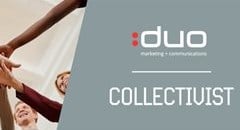There's no question that digital transformation has had a profound effect on many industries, and while uptake may have been a little slower within the healthcare sector, the outlook for the future of African healthtech is a promising one.

Source: Supplied. Brian Smith, technical consultant at Datacentrix.
The healthcare industry is seeing a major shift towards operational technology (OT), fuelled by the requirement for greater patient personalisation, with the aim of providing value-driven care that helps to improve members’ health and increase their quality of life.
According to the Gartner Glossary, operational technology (OT) can be described as ‘hardware and software that detects or causes a change, through the direct monitoring and/or control of industrial equipment, assets, processes and events.’
The difference between IT (information technology) and OT encompasses software and endpoint devices, such as computers and servers, which are managing the flow of data, while OT refers to the technologies used for managing and controlling an organisation’s industrial operations.
What must be remembered within this environment is that OT goes hand-in-hand with digital transformation, especially when it comes to the use of digital assets, for example digital documents and images, which are more frequently in use now than ever before.
Personalisation of patient care
One vital component of OT improvement is the personalisation of patient care. Here, patient records are integrated across departments, providing a single pane of consistent information to efficiently provide patients with personalised care and support. This serves to enrich patient engagement, as the flow of data across the organisation allows for more efficient co-ordination between departments, which in turn reduces the wait-time of patients.
Greater personalisation also enables healthcare workers to collaborate and discuss certain high-case patients in real time with their peers and provide procedures, while keeping all those involved updated through comprehensive document management.
Streamlined service management
In addition, more efficient OT operations allow for streamlined service management. Here it is possible to enhance employees’ experience by ensuring consistent service delivery and operations management across different service departments, such as human resources (HR), facilities and legal departments.
Creating workflows for seamless day-to-day operations helps staff to shift the focus from low priorities to critical issues, and the automation of repetitive processes and implementation of self-service portals for patients both play a role in reducing healthcare providers’ workloads.
The importance of network and endpoint management
Next on the agenda is better network management. It is possible to track and connect medical equipment in your network and gain visibility through a configuration management database (CMDB). Furthermore, AI can be harnessed to proactively monitor and troubleshoot critical applications, servers and other network devices to ensure continuous availability.
From a network management point of view, it is also possible to manage the entire lifecycle of IT assets, from procurement to disposal, while maintaining inventory and managing purchase orders to reduce spending.
The monitoring and management of endpoints is significant. Better management of endpoint devices means that it is possible to track licences and warranties on assets and set alerts if a device doesn’t check in with the server over a predefined time frame. There is opportunity to maintain and view a record of all processing operations related to electronic protected health information (ePHI) stored on multiple endpoints, allowing healthcare workers to access this data with ease.
At the same time, role-based privileges are enforced with endpoint privilege management to prevent unauthorised access to ePHI. Corporate devices can be protected with geo-fencing, ensuring devices leaving the geofence are automatically marked as non-compliant, which immediately triggers notifications to administrators and device users to execute security commands.
From telemedicine and implanted devices, to wearables tracking our health on a day-to-day basis and genomics, the field of healthcare has never been so intensely technology-driven. And as more and more health-related devices come online, the management and securing of these endpoints – as well as all related data - has become increasingly critical.
































